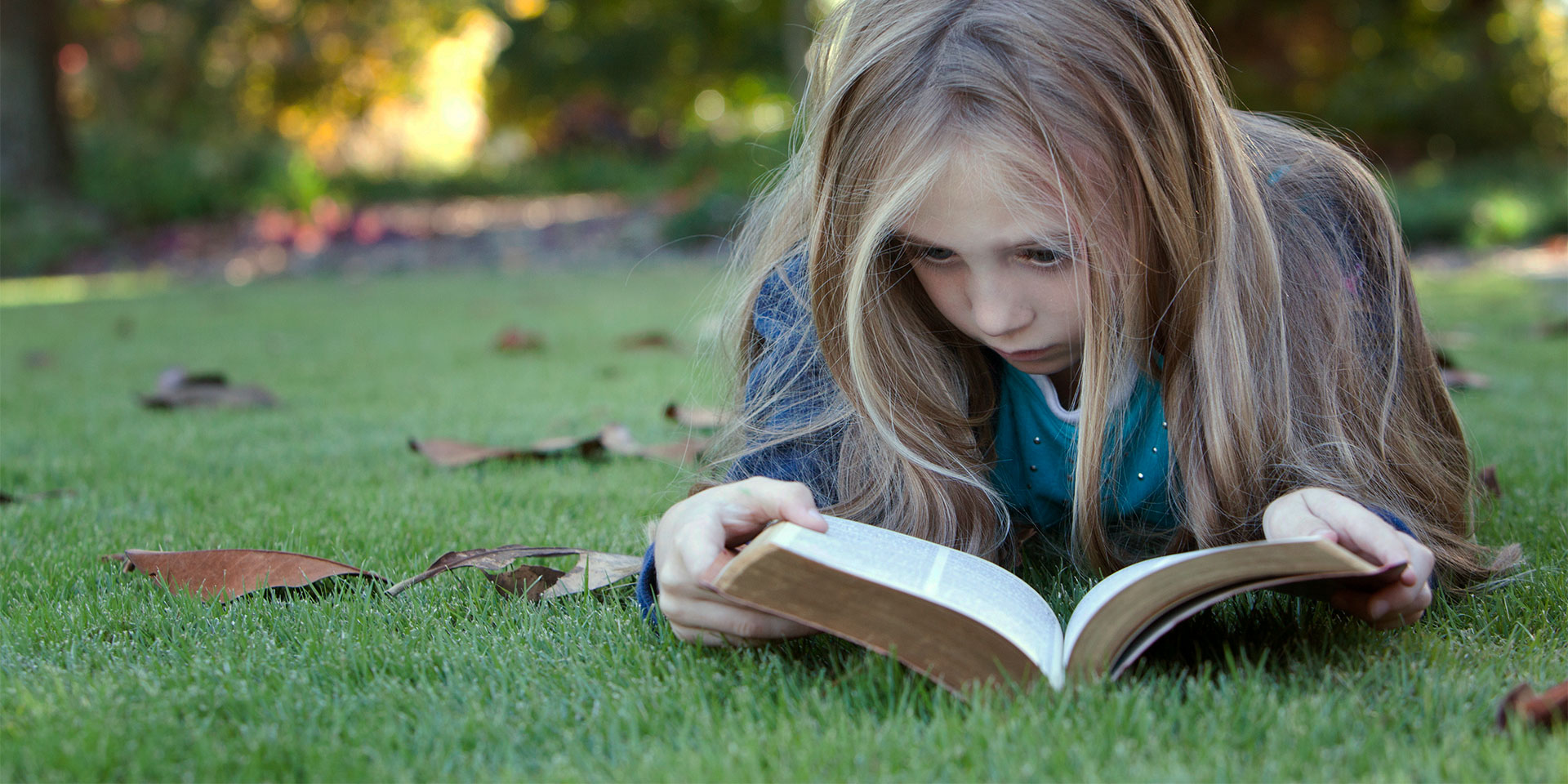“School is where children learn that they have to read. Home is where kids learn to read because they want to,”[1] conclude the authors of a guide to cultivating a passion for reading in children of all ages. It is clear that with good resources and role models, a child can become passionate about reading, but there are parents who wonder where they are going wrong if they fail to inspire a love of books in their child.
“We all begin to read with other people’s eyes,”[2] writes a well-known Romanian teacher, Rodica Zane, in an equally well-known book, What’s the Deal With Reading?, a splendid mosaic of testimonies about the adventure of deciphering the first letters and books.
I reread the sentence a few times, as if it were opaque, even though it expressed a truth as simple as it could be. As I lingered over it, I tried to recall the times when I was read to as a child. And while I’m sure there were some, there were other moments I remembered much more vividly. The ones when, on hot summer afternoons, I would go door to door with a little book under my arm to all the children in the neighbourhood who were a little older than me, hoping that they would take the trouble to read it to me. Or to our elderly neighbours, the only ones left on the meadow in the middle of the farming season.
Two of them, whom I had pestered quite a bit, couldn’t even read. Yet they never told that to me, and in my childish mind, I could never have imagined such a thing—a grown person trapped behind a locked door to an endless kingdom. And if others had lent me their eyes more often, so that I could admire it in peace, I probably would not have tried so early to force the gates of that kingdom.
So it was with pleasure that I immersed myself in Mrs Zane’s tale, as if in the softness of a fluffy blanket, and imagined sleepy children eagerly listening to their favourite story for who knows how many times, even though they knew it by heart. A story they wanted to hear again, read to them by their mother in the yellowish light of a lamp. And so, as the author tells us, they grew up, kept awake night after night by the magic light of the lamp and kissed each morning by the rays of the sun, until the time came for them to decipher the secrets of the alphabet and to syllabise the wondrous story for themselves.
While stories of children who love books so much that they wish they could live between their covers at least once in a while may seem like a thing of the past, the truth is that there are still children who love to read today. And if their numbers are fewer than we’d like, perhaps it wouldn’t hurt to take a critical look at our own reading habits and the ways in which we try to make their encounters with books more engaging.
What has happened to reading for pleasure?
According to a survey conducted in the 2019-2020 school year in America, reading for pleasure is in sharp decline, with the proportion of American 9-13-year-olds who read for pleasure almost every day falling over the past decade to its lowest level since 1984.
Only 26% of children under the age of 18 read every day in 2019, according to a report published by the London-based National Literacy Trust, which promotes literacy. This is the lowest percentage the organisation has recorded since 2005, when it began tracking the reading habits of children and young people. The report also found that enthusiasm for reading declines with age: the number of 5-8-year-olds who said they enjoyed reading was almost double that of 14-16-year-olds.
The pandemic has led to an increase in children’s book sales in the UK (9 million more books sold in 2021 than in 2019), according to research by publisher Farshore. However, the same study shows a continuing decline in children’s love of reading. In 2021, only 25% of children up to the age of 17 read for pleasure “every day or nearly every day,” compared to 38% in 2013. Over the same period, the proportion of children who said they “never read” rose from 13% to 20%.
Since 2016, the reading comprehension of 10-year-olds has declined in all EU countries except France.
Children aged 10 are reading less than they did 5 years ago, according to the Progress in International Reading Literacy Study (PIRLS). The study is conducted every five years and measures the level of comprehension of a text at the end of primary school, as well as reading and interpreting skills.
According to the latest edition of the study, which covers 57 countries (including 23 of the 27 EU countries), the percentage of Swedish fourth-graders who cannot read at all or who have reading difficulties has risen from 12% to 19% compared with five years ago. If this trend continues, Sweden risks having a generation of functional illiterates, said Lotta Edholm, Sweden’s education minister. With the exception of France, the reading skills of 10-year-olds have declined in all EU countries since 2016.
On the day of the PIRLS release, Lotta Edholm hosted a meeting in Brussels with the other 26 EU education ministers to discuss the importance of reading for learning, equity, and active participation in society. Several ministers spoke of the need to invest in resources for pupils from vulnerable families (and those who speak a language other than that of the host country at home), given the worsening reading skills of children in this category in countries such as Sweden, Belgium, France, and Germany.
The challenges of the digital transition, gender differences in reading skills and the difficulties faced by migrant children were among the issues discussed in Brussels. Measures taken by EU countries to encourage a passion for reading include providing access to libraries, training teachers, abolishing traditional reading grids (Croatia), extending school hours by two and a half hours a day, with the extra hours (also) invested in improving writing and reading skills (Greece), organising a national reading contest (Romania) and offering a package of children’s books to new parents (Finland).
One of the conclusions of the debate was that the efforts of schools alone, however important, cannot eradicate the inevitable differences between children who read at home and those who do not.
Raising a book-loving child is easy enough, some say. In any case, the process is facilitated by the parents’ own relationship with books. How much they read to their children and how early they introduce them to the fascinating world of books is also important.
A passion for reading is instilled at an early age
The low number of children who read every day should be a serious concern because a passion for reading has a greater impact on a child’s success in school than other factors related to their family history (place of birth, parents’ education or financial status), says Alison David, an expert in consumer behaviour research.
Less than half of children aged 0-2 have parents who read to them every day or almost every day.
Reading to your young children regularly is one of the best things you can do for them, says Alison David, who lists the benefits of the habit—it provides comfort, reassurance, confidence, and relaxation, makes your child happy, develops vocabulary, self-esteem, imagination, and even improves sleep—while pointing out that less than half of 0-2-year-olds have parents who read to them every day or nearly every day.
A 2019 study found that a child who has an age-appropriate book read to them every day is exposed to around 78,000 words per year. Based on their calculations, the study’s authors estimated the number of words children would hear by the age of 5: 4,662 words if never read to; 63,570 words if read to once or twice a week; 169,520 words if parents read to the child 3-5 times a week; and 296,660 words for children read to daily. To arrive at these figures, the researchers looked at board books with an average of 140 words and picture books with an average of 228 words. In the end, the researchers estimated that a child who is read to every day will hear 1.4 million more words by the time they start kindergarten than children whose parents never read to them.
That’s a staggering gap, says Jessica Logan, the study’s coordinator, who points out that “this isn’t about everyday communication. The words kids hear in books are going to be much more complex, difficult words than they hear just talking to their parents and others in the home.”
By using books, parents help shape their children’s world, teach them that everything has a name, and help them “take a huge step” in terms of cognitive development and communication, says paediatrician Perri Klass.
Current knowledge about brain development shows that when parents read regularly to their children, they can learn skills that lead to reading right from birth, and this process is especially important in the first three years of life, says Barry Zuckerman, MD, co-founder of the national nonprofit Reach Out and Read.
The first three years of life are critical for brain development, which is why the American Academy of Pediatrics recommends that parents keep their children away from screens until at least age two and read to them daily. Paediatricians hope that early reading could help close the educational gap between children from low-income families and those from higher socioeconomic backgrounds. “If we can get that first 1,000 days of life right, we’re really going to save a lot of trouble later on and have to do far less remediation,” concludes assistant professor of paediatrics Dipesh Navsaria.
How to instil a love of reading in children (in the digital age)
For today’s children, technology is no longer just an accessory, but part of their lives, writes Dr Raymond J. Huntington, founder of the Huntington Learning Centre, who offers some tips on how to encourage digital natives to read more.
In fact, studies show that between 2019 and 2020, screen time for 8-12-year-olds reached more than 5.5 hours per day, and more than 8.5 hours for 13-18-year-olds (a 17% increase in just two years). The same study found that if forced to choose a social media site or platform they could not live without, a third of teens would choose YouTube, 20% would choose Snapchat, and 13% would choose either Instagram or TikTok. Given that reading can hardly compete with surfing the web (at least at certain ages), but also given the harmful effects of excessive screen time, parents need to limit the use of digital devices and teach children to respect certain boundaries.
However, the desire to read must come from within the child, which means we need ways to stimulate its development.
To encourage children to read, we need to make reading material as accessible as possible, says Huntington, who encourages parents to create a children’s bookshelf as a first step in building a children’s library. Downloading a book-reading app or buying an e-book reader (a device specifically designed to read books electronically) could also be a solution, giving your child access to their books anytime, anywhere.
Children should also be helped to find books that appeal to them and that match their interests as well as their age and ability to understand a particular text.
Finally, parents can make the reading routine a fun event, just as they can use it as a way to create family memories, says Huntington. A reading night in the living room where one parent prepares a favourite snack, everyone reads from the same text or discusses books, a weekend visit to the bookstore or library followed by a pizza night or cooking dinner together could be ideas to make reading a habit that your child associates with good memories.
The more we can make reading an exciting part of daily life, the more likely a child will develop a love of books, says Lauren Tarshis, vice president of the multinational Scholastic Corporation. Sometimes, despite the best efforts of parents or teachers, connecting with books isn’t easy, admits Tarshis, who believes the process shouldn’t put pressure on either party. Her four children eventually fell in love with reading, but it took time, guidance, and giving each child the freedom to choose their own books and reading pace.
The kind of reading that makes us better parents
Research to date has shown the many benefits that children who are passionate about reading enjoy, but beyond the well-known ones, there are some we may never have thought of, says psychologist Susan Newman, listing some recent studies on the subject.
One study, by Professor Manuel Jimenez, tracked the reading habits of more than 2,000 urban mothers (some of whom were raising their children alone) at three stages: when the children were 1, 3, and 5 years old. Jimenez found that the habit of reading to children was associated with the development of a less harsh parenting style and also with a reduction in hyperactive behaviour in children.
The American Academy of Pediatrics also recommends that paediatricians encourage parents to read aloud to their children, as this practice is thought to improve child-parent interactions and relationships, thereby supporting children’s social-emotional development.
The habit of reading to children has been linked to the development of a less harsh parenting style, as well as a reduction in hyperactive behaviour in children.
In a 2019 study by two Canadian researchers, 70 parents were tested on their reading-related knowledge (such as spelling knowledge), while their 6- and 7-year-old children were also tested on their reading skills. In the next stage, the children were asked to read aloud to their parents, while the parents were asked to help them as they would normally do. Parents who scored higher on the tests were less critical of their children’s mistakes and more appreciative of their results, but also paid more attention to them during the reading exercise.
Although most studies focus on the benefits for young children who are regularly read to by their parents, these benefits don’t diminish as children get older. In fact, a study by Australian authors shows that reading experiences (enjoyable or otherwise) in the family shape later attitudes to reading. The study suggests that parents should not stop reading with their children when they reach the stage where they can read on their own. Instead, they should continue the activity for as long as children are willing to participate, by making the experience as enjoyable and challenging as possible.
Furthermore, by setting a good example, you can convince them that reading is not a chore, but a habit that accompanies us, brings us joy and shapes us for the rest of our lives.
Carmen Lăiu is an editor at Signs of the Times Romania and ST Network.



















